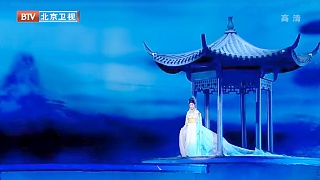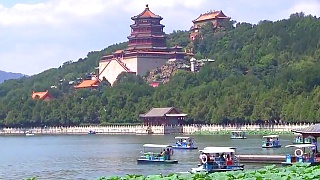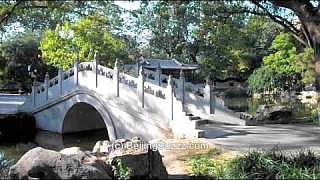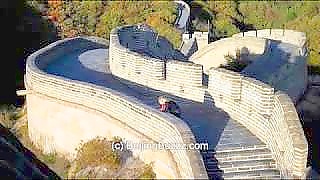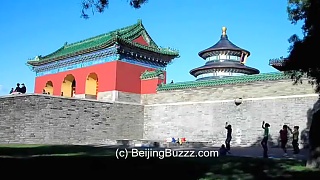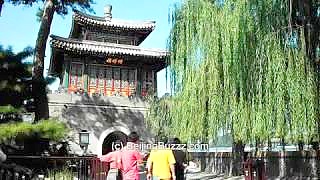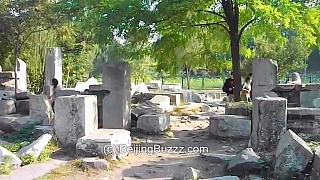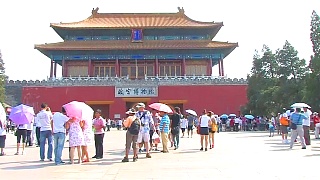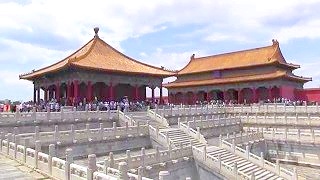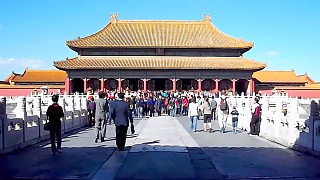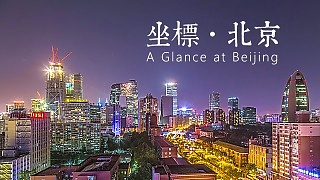
|
ShenZhen: 20 Kid-Friendly Places to Visit
Window of the World (õĖ¢ńĢīõ╣ŗń¬Ś Sh├¼ji├© Zh─½ Chu─üng): Theme park with replicas of famous landmarks from around the world.
Happy Valley (µ¼óõ╣ÉĶ░Ę Hu─ünl├©gŪö): Amusement park with rides, shows, and attractions for all ages.
Shenzhen Safari Park (µĘ▒Õ£│ķćÄńö¤ÕŖ©ńē®ÕøŁ Sh─ōnzh├©n Y─øsh─ōng D├▓ngw├╣yu├Īn): Safari park with a variety of animals, shows, and interactive experiences.
Sea World (µĄĘõĖŖõĖ¢ńĢī HŪÄish├Āng Sh├¼ji├©): Waterfront area with restaurants, shops, and entertainment venues.
Shenzhen Children's Palace (µĘ▒Õ£│ÕĖéÕ░æÕ╣┤Õ«½ Sh─ōnzh├©n Sh├¼ Sh├Āoni├Īn G┼Źng): Cultural center offering classes, workshops, and performances for children.
Fairy Lake Botanical Garden (õ╗Öµ╣¢µżŹńē®ÕøŁ Xi─ün H├║ Zh├Łw├╣yu├Īn): Botanical garden with plant collections, walking trails, and scenic landscapes.
Shenzhen Splendid China Folk Village (µĘ▒Õ£│ķö”ń╗ŻõĖŁÕŹÄµ░æõ┐ŚµØæ Sh─ōnzh├©n JŪÉnxi├╣ Zh┼Źnghu├Ī M├Łns├║ C┼½n): Theme park with exhibits on Chinese culture, history, and traditions.
Shenzhen Mangrove Nature Reserve (µĘ▒Õ£│ń║óµĀæµ×ŚĶć¬ńäČõ┐صŖżÕī║ Sh─ōnzh├©n H├│ngsh├╣l├Łn Z├¼r├Īn BŪÄoh├╣ Q┼½): Nature reserve with mangrove forests, boardwalks, and birdwatching.
Dameisha Beach (Õż¦µóģµ▓ÖµĄĘµ╗©Õģ¼ÕøŁ D├Ā M├®ish─ü HŪÄib─½n G┼Źngyu├Īn): Beach park with sandy shores, water sports, and seaside attractions.
Xiaomeisha Beach (Õ░ŵóģµ▓ÖµĄĘµ╗©Õģ¼ÕøŁ XiŪÄo M├®ish─ü HŪÄib─½n G┼Źngyu├Īn): Beach park with swimming areas, water slides, and recreational facilities.
Shenzhen Lianhuashan Park (µĘ▒Õ£│ĶÄ▓ĶŖ▒Õ▒▒Õģ¼ÕøŁ Sh─ōnzh├©n Li├Īnhu─ü Sh─ün G┼Źngyu├Īn): Park with gardens, temples, and scenic views of the city.
Shenzhen Children's Library (µĘ▒Õ£│ÕĖéÕ░æÕ╣┤Õä┐ń½źÕøŠõ╣”ķ”å Sh─ōnzh├©n Sh├¼ Sh├Āoni├Īn ├ērt├│ng T├║sh┼½guŪÄn): Library with children's books, storytelling sessions, and educational activities.
Shenzhen Science Museum (µĘ▒Õ£│ń¦æµŖĆķ”å Sh─ōnzh├©n K─ōj├¼guŪÄn): Museum with interactive exhibits, experiments, and demonstrations on science and technology.
Shenzhen Happy Harbor (µĘ▒Õ£│µ¼óõ╣ɵĖ»µ╣Š Sh─ōnzh├©n Hu─ünl├© GŪÄngw─ün): Waterfront area with shops, restaurants, and entertainment options for families.
Shenzhen Museum (µĘ▒Õ£│ÕŹÜńē®ķ”å Sh─ōnzh├©n B├│w├╣guŪÄn): Museum with exhibits on Shenzhen's history, culture, and development.
Shenzhen International Garden and Flower Expo Park (µĘ▒Õ£│ÕøĮķÖģÕøŁµ×ŚĶŖ▒ÕŹēÕŹÜĶ¦łÕøŁ Sh─ōnzh├©n Gu├│j├¼ Yu├Īnl├Łn Hu─ühu├¼ B├│lŪÄn Yu├Īn): Park with botanical gardens, flower displays, and cultural events.
Shenzhen Poly Theatre (µĘ▒Õ£│õ┐ØÕł®Õē¦ķÖó Sh─ōnzh├©n BŪÄol├¼ J├╣yu├Ān): Performing arts venue with theater productions, concerts, and shows suitable for families.
Shenzhen OCT Harbour (µĘ▒Õ£│ÕŹÄõŠ©Õ¤Äµ¼óõ╣ɵĖ»µ╣Š Sh─ōnzh├©n Hu├Īqi├Īoch├®ng Hu─ünl├© GŪÄngw─ün): Waterfront area with shopping, dining, and entertainment options overlooking the bay.
Shenzhen Guanlan Printmaking Base (µĘ▒Õ£│Ķ¦éµŠ£ńēłńö╗Õ¤║Õ£░ Sh─ōnzh├©n Gu─ünl├Īn BŪÄnhu├Ā J─½d├¼): Art village with printmaking studios, galleries, and workshops.
Shenzhen Fairy Lake Botanical Garden (µĘ▒Õ£│õ╗Öµ╣¢µżŹńē®ÕøŁ Sh─ōnzh├©n Xi─ün H├║ Zh├Łw├╣yu├Īn): Botanical garden with plant collections, walking trails, and scenic landscapes.
ShenZhen: 30 More Places to Visit
Shenzhen Window of the World (µĘ▒Õ£│õĖ¢ńĢīõ╣ŗń¬Ś Sh─ōnzh├©n Sh├¼ji├© Zh─½ Chu─üng): Theme park with replicas of famous landmarks from around the world.
Shenzhen Happy Valley (µĘ▒Õ£│µ¼óõ╣ÉĶ░Ę Sh─ōnzh├©n Hu─ünl├©gŪö): Amusement park with rides, shows, and attractions for all ages.
Shenzhen Safari Park (µĘ▒Õ£│ķćÄńö¤ÕŖ©ńē®ÕøŁ Sh─ōnzh├©n Y─øsh─ōng D├▓ngw├╣yu├Īn): Safari park with a variety of animals, shows, and interactive experiences.
Shenzhen Sea World (µĘ▒Õ£│µĄĘõĖŖõĖ¢ńĢī Sh─ōnzh├©n HŪÄish├Āng Sh├¼ji├©): Waterfront area with restaurants, shops, and entertainment venues.
Shenzhen Children's Palace (µĘ▒Õ£│ÕĖéÕ░æÕ╣┤Õ«½ Sh─ōnzh├©n Sh├¼ Sh├Āoni├Īn G┼Źng): Cultural center offering classes, workshops, and performances for children.
Shenzhen Fairy Lake Botanical Garden (µĘ▒Õ£│õ╗Öµ╣¢µżŹńē®ÕøŁ Sh─ōnzh├©n Xi─ün H├║ Zh├Łw├╣yu├Īn): Botanical garden with plant collections, walking trails, and scenic landscapes.
Shenzhen Splendid China Folk Village (µĘ▒Õ£│ķö”ń╗ŻõĖŁÕŹÄµ░æõ┐ŚµØæ Sh─ōnzh├©n JŪÉnxi├╣ Zh┼Źnghu├Ī M├Łns├║ C┼½n): Theme park with exhibits on Chinese culture, history, and traditions.
Shenzhen Mangrove Nature Reserve (µĘ▒Õ£│ń║óµĀæµ×ŚĶć¬ńäČõ┐صŖżÕī║ Sh─ōnzh├©n H├│ngsh├╣l├Łn Z├¼r├Īn BŪÄoh├╣ Q┼½): Nature reserve with mangrove forests, boardwalks, and birdwatching.
Shenzhen Dameisha Beach (µĘ▒Õ£│Õż¦µóģµ▓ÖµĄĘµ╗©Õģ¼ÕøŁ Sh─ōnzh├©n D├Ā M├®ish─ü HŪÄib─½n G┼Źngyu├Īn): Beach park with sandy shores, water sports, and seaside attractions.
Shenzhen Xiaomeisha Beach (µĘ▒Õ£│Õ░ŵóģµ▓ÖµĄĘµ╗©Õģ¼ÕøŁ Sh─ōnzh├©n XiŪÄo M├®ish─ü HŪÄib─½n G┼Źngyu├Īn): Beach park with swimming areas, water slides, and recreational facilities.
Shenzhen Lianhuashan Park (µĘ▒Õ£│ĶÄ▓ĶŖ▒Õ▒▒Õģ¼ÕøŁ Sh─ōnzh├©n Li├Īnhu─ü Sh─ün G┼Źngyu├Īn): Park with gardens, temples, and scenic views of the city.
Shenzhen Children's Library (µĘ▒Õ£│ÕĖéÕ░æÕ╣┤Õä┐ń½źÕøŠõ╣”ķ”å Sh─ōnzh├©n Sh├¼ Sh├Āoni├Īn ├ērt├│ng T├║sh┼½guŪÄn): Library with children's books, storytelling sessions, and educational activities.
Shenzhen Science Museum (µĘ▒Õ£│ń¦æµŖĆķ”å Sh─ōnzh├©n K─ōj├¼guŪÄn): Museum with interactive exhibits, experiments, and demonstrations on science and technology.
Shenzhen Happy Harbor (µĘ▒Õ£│µ¼óõ╣ɵĖ»µ╣Š Sh─ōnzh├©n Hu─ünl├© GŪÄngw─ün): Waterfront area with shops, restaurants, and entertainment options for families.
Shenzhen Museum (µĘ▒Õ£│ÕŹÜńē®ķ”å Sh─ōnzh├©n B├│w├╣guŪÄn): Museum with exhibits on Shenzhen's history, culture, and development.
Shenzhen International Garden and Flower Expo Park (µĘ▒Õ£│ÕøĮķÖģÕøŁµ×ŚĶŖ▒ÕŹēÕŹÜĶ¦łÕøŁ Sh─ōnzh├©n Gu├│j├¼ Yu├Īnl├Łn Hu─ühu├¼ B├│lŪÄn Yu├Īn): Park with botanical gardens, flower displays, and cultural events.
Shenzhen Poly Theatre (µĘ▒Õ£│õ┐ØÕł®Õē¦ķÖó Sh─ōnzh├©n BŪÄol├¼ J├╣yu├Ān): Performing arts venue with theater productions, concerts, and shows suitable for families.
Shenzhen OCT Harbour (µĘ▒Õ£│ÕŹÄõŠ©Õ¤Äµ¼óõ╣ɵĖ»µ╣Š Sh─ōnzh├©n Hu├Īqi├Īoch├®ng Hu─ünl├© GŪÄngw─ün): Waterfront area with shopping, dining, and entertainment options overlooking the bay.
Shenzhen Guanlan Printmaking Base (µĘ▒Õ£│Ķ¦éµŠ£ńēłńö╗Õ¤║Õ£░ Sh─ōnzh├©n Gu─ünl├Īn BŪÄnhu├Ā J─½d├¼): Art village with printmaking studios, galleries, and workshops.
Shenzhen Fairy Lake Botanical Garden (µĘ▒Õ£│õ╗Öµ╣¢µżŹńē®ÕøŁ Sh─ōnzh├©n Xi─ün H├║ Zh├Łw├╣yu├Īn): Botanical garden with plant collections, walking trails, and scenic landscapes.
Shenzhen Window of the World (µĘ▒Õ£│õĖ¢ńĢīõ╣ŗń¬Ś Sh─ōnzh├©n Sh├¼ji├© Zh─½ Chu─üng): Theme park with replicas of famous landmarks from around the world.
Shenzhen Happy Valley (µĘ▒Õ£│µ¼óõ╣ÉĶ░Ę Sh─ōnzh├©n Hu─ünl├©gŪö): Amusement park with rides, shows, and attractions for all ages.
Shenzhen Safari Park (µĘ▒Õ£│ķćÄńö¤ÕŖ©ńē®ÕøŁ Sh─ōnzh├©n Y─øsh─ōng D├▓ngw├╣yu├Īn): Safari park with a variety of animals, shows, and interactive experiences.
Shenzhen Sea World (µĘ▒Õ£│µĄĘõĖŖõĖ¢ńĢī Sh─ōnzh├©n HŪÄish├Āng Sh├¼ji├©): Waterfront area with restaurants, shops, and entertainment venues.
Shenzhen Children's Palace (µĘ▒Õ£│ÕĖéÕ░æÕ╣┤Õ«½ Sh─ōnzh├©n Sh├¼ Sh├Āoni├Īn G┼Źng): Cultural center offering classes, workshops, and performances for children.
Shenzhen Fairy Lake Botanical Garden (µĘ▒Õ£│õ╗Öµ╣¢µżŹńē®ÕøŁ Sh─ōnzh├©n Xi─ün H├║ Zh├Łw├╣yu├Īn): Botanical garden with plant collections, walking trails, and scenic landscapes.
Shenzhen Splendid China Folk Village (µĘ▒Õ£│ķö”ń╗ŻõĖŁÕŹÄµ░æõ┐ŚµØæ Sh─ōnzh├©n JŪÉnxi├╣ Zh┼Źnghu├Ī M├Łns├║ C┼½n): Theme park with exhibits on Chinese culture, history, and traditions.
Shenzhen Mangrove Nature Reserve (µĘ▒Õ£│ń║óµĀæµ×ŚĶć¬ńäČõ┐صŖżÕī║ Sh─ōnzh├©n H├│ngsh├╣l├Łn Z├¼r├Īn BŪÄoh├╣ Q┼½): Nature reserve with mangrove forests, boardwalks, and birdwatching.
|
 Ten-rope skipping in JingShan Park µÖ»Õ▒▒Õģ¼ÕøŁ, BeiJing
Ten-rope skipping in JingShan Park µÖ»Õ▒▒Õģ¼ÕøŁ, BeiJing